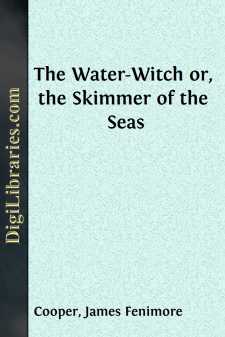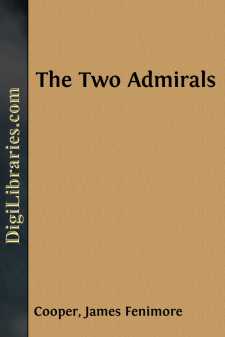Categories
- Antiques & Collectibles 13
- Architecture 36
- Art 48
- Bibles 22
- Biography & Autobiography 813
- Body, Mind & Spirit 142
- Business & Economics 28
- Children's Books 15
- Children's Fiction 12
- Computers 4
- Cooking 94
- Crafts & Hobbies 4
- Drama 346
- Education 46
- Family & Relationships 57
- Fiction 11829
- Games 19
- Gardening 17
- Health & Fitness 34
- History 1377
- House & Home 1
- Humor 147
- Juvenile Fiction 1873
- Juvenile Nonfiction 202
- Language Arts & Disciplines 88
- Law 16
- Literary Collections 686
- Literary Criticism 179
- Mathematics 13
- Medical 41
- Music 40
- Nature 179
- Non-Classifiable 1768
- Performing Arts 7
- Periodicals 1453
- Philosophy 64
- Photography 2
- Poetry 896
- Political Science 203
- Psychology 42
- Reference 154
- Religion 513
- Science 126
- Self-Help 84
- Social Science 81
- Sports & Recreation 34
- Study Aids 3
- Technology & Engineering 59
- Transportation 23
- Travel 463
- True Crime 29
Homeward Bound or, the Chase
Description:
Excerpt
Preface.
In one respect, this book is a parallel to Franklin's well-known apologue of the hatter and his sign. It was commenced with a sole view to exhibit the present state of society in the United States, through the agency, in part, of a set of characters with different peculiarities, who had freshly arrived from Europe, and to whom the distinctive features of the country would be apt to present themselves with greater force, than to those who had never lived beyond the influence of the things portrayed. By the original plan, the work was to open at the threshold of the country, or with the arrival of the travellers at Sandy Hook, from which point the tale was to have been carried regularly forward to its conclusion. But a consultation with others has left little more of this plan than the hatter's friends left of his sign. As a vessel was introduced in the first chapter, the cry was for "more ship," until the work has become "all ship;" it actually closing at, or near, the spot where it was originally intended it should commence. Owing to this diversion from the author's design--a design that lay at the bottom of all his projects--a necessity has been created of running the tale through two separate works, or of making a hurried and insufficient conclusion. The former scheme has, consequently, been adopted.
It is hoped that the interest of the narrative will not be essentially diminished by this arrangement.
There will be, very likely, certain imaginative persons, who will feel disposed to deny that every minute event mentioned in these volumes ever befell one and the same ship, though ready enough to admit that they may very well have occurred to several different ships: a mode of commenting that is much in favour with your small critic. To this objection, we shall make but a single answer. The caviller, if any there should prove to be, is challenged to produce the log-book of the Montauk, London packet, and if it should be found to contain a single sentence to controvert any one of our statements or facts, a frank recantation shall be made. Captain Truck is quite as well known in New York as in London or Portsmouth, and to him also we refer with confidence, for a confirmation of all we have said, with the exception, perhaps, of the little occasional touches of character that may allude directly to himself. In relation to the latter, Mr. Leach, and particularly Mr. Saunders, are both invoked as unimpeachable witnesses.
Most of our readers will probably know that all which appears in a New York journal is not necessarily as true as the Gospel. As some slight deviations from the facts accidentally occur, though doubtless at very long intervals, it should not be surprising that they sometimes omit circumstances that are quite as veracious as anything they do actually utter to the world. No argument, therefore, can justly be urged against the incidents of this story, on account of the circumstance of their not being embodied in the regular marine news of the day....












